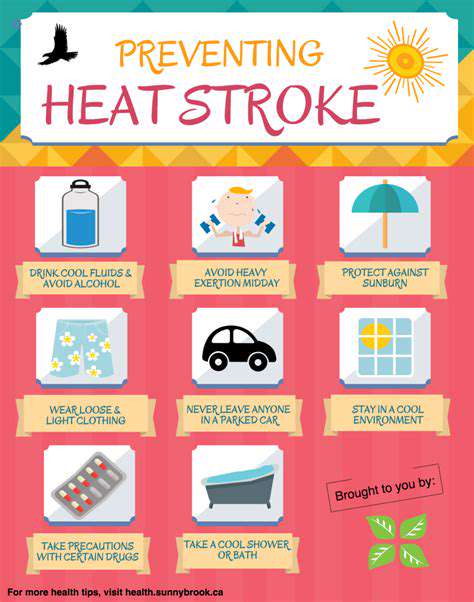Preventing Canine Heatstroke: Recognizing Symptoms in Dogs
Common Symptoms of Heatstroke in Dogs
Signs of Overheating: What to Look For
One of the first signs that a dog may be experiencing heatstroke is excessive panting. Unlike normal panting, which serves to cool the dog down, panting associated with overheating is often rapid and may be accompanied by a dry tongue. Pet owners should be vigilant in observing their dog's breathing, especially during hot weather or after strenuous exercise.
Another common indicator of heatstroke is drooling. If a dog is drooling excessively and the saliva appears thick, it may be struggling to maintain its body temperature. Additionally, watch for signs of lethargy; if your dog is unusually tired, unresponsive, or reluctant to stand up, these could be serious symptoms of heat exhaustion.
Behavioral Changes That Signal Trouble
Dogs suffering from heatstroke may exhibit altered behavior, which can include signs of confusion. This may present as disorientation where the dog seems unsure of its surroundings or has difficulty following commands. An affected dog might also show a lack of interest in food or play, which are significant red flags for pet owners.
Another behavioral change to note is an increased heart rate. If you feel your dog’s pulse and it seems abnormally fast, this could be a direct response to overheating. Dogs in distress may also seek out cool surfaces, like tiles or shaded areas, as they instinctively try to lower their body temperature. Immediate attention is crucial when these behaviors manifest.
Physical Symptoms to Monitor Closely
In more severe cases of heatstroke, physical symptoms become pronounced. A dog's body temperature may exceed the normal range of 101-102.5°F, leading to high fever. To check your dog’s temperature, you can use a rectal thermometer specifically designed for veterinary use. Anything above 104°F is considered dangerous and requires immediate medical attention.
Furthermore, dogs suffering from heatstroke may display signs of vomiting or diarrhea, which can lead to dehydration. If your dog experiences these symptoms, they must be treated promptly. Monitoring their hydration levels and providing access to clean, cool water can help mitigate some of these physical effects, but veterinary assistance is often necessary.
Prevention Tips to Avoid Heatstroke

Understanding the Risks of Heatstroke
Heatstroke is a serious condition that occurs when a dog's body overheats.
Dogs are particularly vulnerable to heat-related illnesses due to their limited ability to cool themselves.
Factors such as breed, age, and overall health can influence a dog's risk of heatstroke.
Breeds with short noses, like Bulldogs and Pugs, are especially susceptible.
Recognizing the early signs of heatstroke can be a life-saving skill for dog owners.
Signs of Heatstroke to Watch For
It's crucial to be aware of the symptoms of heatstroke in dogs.
Common indications include excessive panting, drooling, and lethargy.
If you notice your dog struggling to breathe or exhibiting confusion, take immediate action.
Additionally, if your dog experiences vomiting or loses consciousness, this is a medical emergency.
Monitoring your dog's behavior during hot weather can help you catch these symptoms early.
Creating a Safe Environment for Your Dog
Provide your dog with a cool, shaded area to relax during hot days.
Access to fresh water is essential for keeping dogs properly hydrated.
Consider limiting outdoor activities during peak heat hours typically between 10 AM and 4 PM.
Using cooling mats or vests can help regulate your dog's temperature.
Always keep an eye on your dog, especially if they are playing outside, to prevent overheating.
Emergency Measures if Heatstroke Occurs
If you suspect your dog is suffering from heatstroke, act quickly.
Move them to a cooler place immediately to help lower their body temperature.
Applying cool, wet towels to their body can be beneficial in cooling them down.
It's vital to seek veterinary help as soon as possible, even if they seem to recover.
Prompt treatment can prevent serious complications and ensure your dog's health and safety.